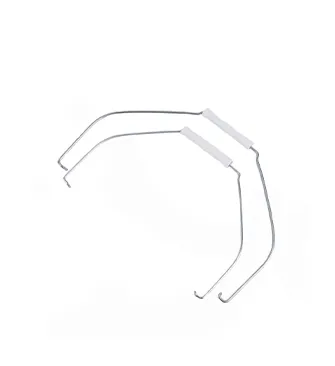-
 Phone:
Phone: -
 Email:
Email:

Trends and Factors Influencing Razor Wire Pricing in Today's Market
Understanding Razor Wire Pricing Factors and Market Trends
Razor wire has emerged as a crucial element in security fencing and perimeter protection within various sectors, including residential, commercial, and industrial facilities. Its sharp edges serve as a formidable deterrent against intruders, making it a preferred choice for places that require high-security measures. As the demand for enhanced security solutions continues to grow, understanding the pricing of razor wire—and the factors influencing it—becomes increasingly important for both consumers and businesses alike.
What Influences Razor Wire Pricing?
The price of razor wire can be influenced by several factors, including material quality, wire gauge, production techniques, and regional availability. The primary materials used in razor wire manufacturing are galvanized steel and stainless steel, with galvanized options typically being more affordable due to their widespread availability and lower production costs. Conversely, stainless steel razor wire tends to be more expensive but offers superior corrosion resistance and durability, making it ideal for coastal or humid environments.
Another crucial factor is the gauge of the wire. Thicker wire gauges are generally stronger and more durable, which can significantly impact the price. While thinner wire might be sufficient for certain applications, businesses that prioritize security may opt for thicker wire despite the higher cost, viewing it as a long-term investment for protection.
Production techniques also play a role in pricing. Razor wire can be manufactured through various methods that affect both quality and cost. For example, high-quality razor wire often undergoes rigorous quality control processes to ensure strength and sharpness, which may lead to higher prices. Additionally, if a manufacturer imports materials from abroad, fluctuations in trade tariffs and shipping costs can also affect the final price of the product.
Market Trends and Consumer Behavior
razor wire price

In recent years, the razor wire market has seen a notable increase in demand, partly due to heightened security concerns globally. Incidents of vandalism, theft, and terrorism have led more entities to invest in robust security systems, driving up the sales of razor wire fencing. This trend has not only influenced pricing but has also led manufacturers to innovate and create more advanced versions of razor wire that incorporate features such as anti-climb technology and eco-friendly materials.
Moreover, the growing trend of DIY home security solutions has caused an increase in retail availability of razor wire, making it accessible to individual consumers. Online marketplaces have expanded their offerings, allowing buyers to compare prices and read reviews, which has further influenced price variations across different platforms.
Regional Price Variations
Geographically, the pricing of razor wire can vary significantly due to local demand, regulations, and labor costs. In areas where security threats are perceived to be higher, prices may be elevated due to heightened demand. Additionally, some regions may have stricter regulations regarding the use of razor wire, which can influence both accessibility and price.
For instance, urban centers may experience higher prices due to increased demand from businesses needing security solutions, while rural areas might offer lower prices reflective of decreased competition and demand.
Conclusion
In conclusion, razor wire pricing is influenced by various factors, including material quality, production methods, and market trends. As security concerns continue to rise globally, consumers and businesses alike must stay informed about these dynamics to make educated purchasing decisions. Understanding these elements not only enhances knowledge but also empowers buyers to seek the best products that align with their security needs and budgets. As the market evolves, it's essential to keep an eye on trends and anticipate changes that could impact the pricing of razor wire in the future.
-
Wire Mesh for Every Need: A Practical SolutionNewsJul.25,2025
-
Steel Fences: Durable, Secure, and Stylish OptionsNewsJul.25,2025
-
Roll Top Fencing: A Smart Solution for Safety and SecurityNewsJul.25,2025
-
Cattle Farm Fencing Solutions for Maximum SecurityNewsJul.25,2025
-
Affordable Iron Binding Wire SolutionsNewsJul.25,2025
-
Affordable Galvanized Wire SolutionsNewsJul.25,2025
-
Wire Hanger Recycling IdeasNewsJul.25,2025








